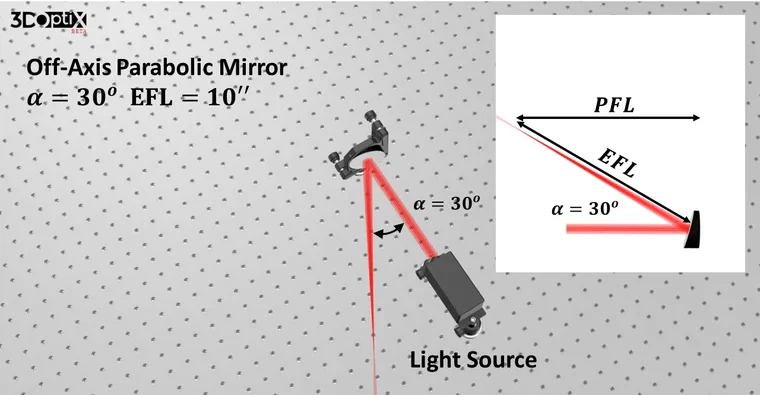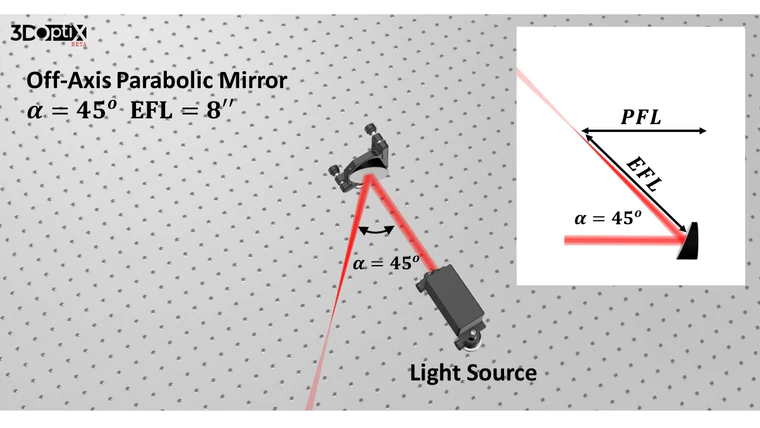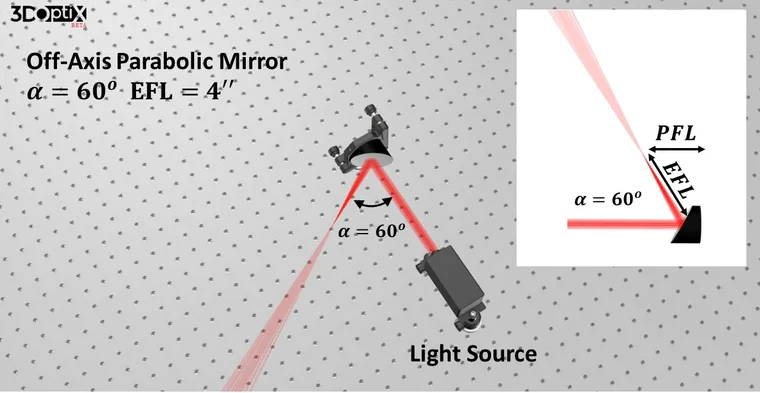Parabolic mirrors focus a collimated beam into a focal point, irrespectively of the wavelength of the incident light, thus allowing achromatic focusing. In addition, point-source light located at the Parabolic mirror focus creates a collimated beam with plane wavefronts.
An On-Axis parabolic mirror is often not useful as it overlaps with some parts of the incoming beam. Considering a portion of the parabolic surface, the light will be able to focus in an Off-Axis way, offering a method to use the advantages of parabolic mirrors without interfering with the assembling task.
The important parameters that control the functionality of an Off-Axis Parabolic mirror are:
* The parent focal length (PFL), which is the focus-length of the equivalent On-Axis parabolic mirror (i.e. the focal length from the center of the complete parabola).
* The effective focal length (EFL), sometimes known as the reflective focal length (RFL), which is the measured focal length from the surface of the mirror to the focal length.
* The angle of focusing, denoted here as , which is the angle between the PFL vector to the EFL vector.
In the following images, we present various examples of common parameters of the Off-Axis parabolic mirrors.








